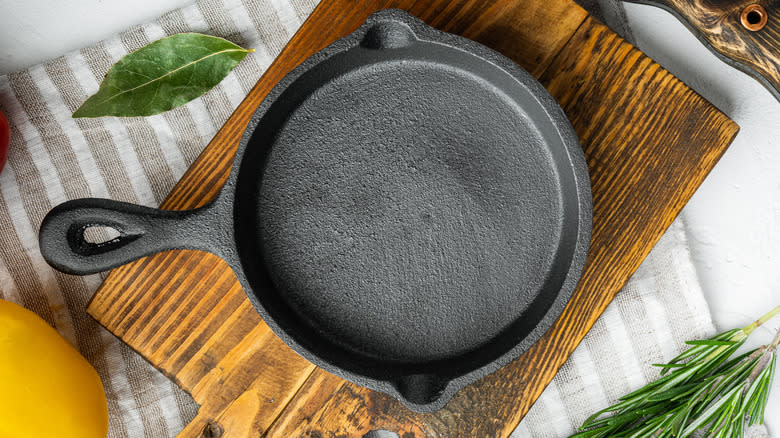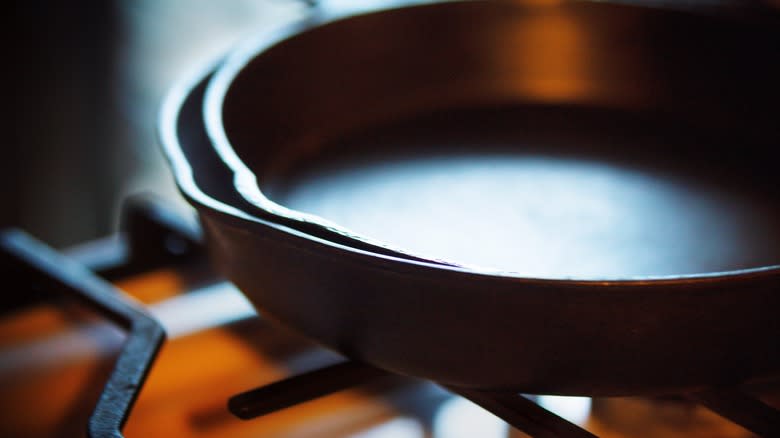The Clever Way To Use Your Cast Iron Skillet To Keep Dishes Warm On The Stovetop

Your cast iron pan is a workhorse, but did you know it can even do way more than sear a steak or help you cook the best asparagus ever? The heavy iron is perfect for holding heat steady, which is why it's also great when you're ready to bake a delicious, crusty artisan sourdough bread recipe. That capability of holding steady heat can also come in handy when you want to keep food warm on the stove -- the thick metal pan buffers the harsh heat of your burner.
Keep dishes warm on the stovetop by avoiding putting them over direct heat. Instead, if you need a pot of mashed potatoes to remain warm, put the pot inside of your cast iron. Cast iron is so good at holding heat that you can use a warmed pan to keep a bowl of butter melted without constantly worrying that it will burn, even with the burner turned off. That trick can also keep your chocolate melty when dipping strawberries. A cast iron pan on low heat adds an extra layer of thickness to the bottom of a pan of food so that it doesn't burn.
Read more: Hacks That Will Make Boiling Your Eggs So Much Easier
Slow And Low Is The Best Heat To Use Cast Iron As A Warmer

Using cast iron to keep dishes warm is really useful when you want to avoid overcooking or burning food, or for those times you just don't want to turn on your oven to warm something up. The gentle, low heat radiating from the metal won't scorch the bottom of your pans like direct burner heat can, even on the lowest flame. If you've ever simmered creamy potato soup only to find a burned pan bottom or burnt the bottom of a pot of polenta or mashed potatoes trying to keep it warm, placing your cast iron pan between the burner and your food pan can save the day -- or at least the dinner!
Remember that you'll want to use the lowest heat setting possible when using your cast iron pan as a heat diffuser. Otherwise, you risk making the metal hot enough to burn your food anyway. You can alternate turning the burner on and off to get a barely warm surface that works to keep delicate Hollandaise sauce or softly scrambled eggs at just the right serving temperature.
Read the original article on Tasting Table

